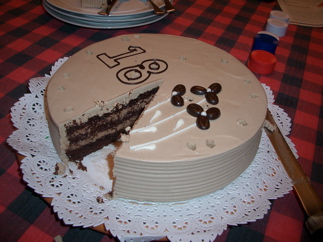I’ve written news stories, editorials, op-ed columns, magazine features, TV news segments, obituaries, educational copy for a financial services firm, poems (yes, a few), journals, more blog entries and emails than the world needs and too few letters when I should have, personal essays, something approaching a short story, checks, job applications, resumes, letters of reference, explanations of firings, layoff speeches, and likely many things it’s good I don’t remember.
But there’s always something new. For instance, writing about draperies, fans, desks, and storage lockers for a retail catalog that will remain nameless. About the “polished artistry” of a curtain’s inverted pleats. About the “thrilling textile art” that is Belgian linen. About “the multifaceted refinement” of a beveled-glass mirror made in China.
If nothing else (but there is something else — money), the writing’s instructive. You actually need to find a story in every product. If you grew up in the “Seinfeld”/J. Peterman era, naturally you think of the absurd tales invented around items like 10-gallon hats or duster coats. Sitting at a desk, looking at bad black-and-white pictures of drapes made of Thai silk and wondering what little slice of reality and fantasy might make a readable short paragraph that would lead someone to think of buying, I was reminded of my dad’s career at Spiegel’s.
It was a mail-order house that grew from a family dry-goods business founded in the 1860s. Dad used to be one of the guys responsible for merchandise control, as I understood it, which essentially meant keeping track of everything Spiegel’s bought and sold. So that meant having a line on all the goods the buyers were contracting for in current and future catalogs and everything that the company shipped out to customers. It was a big operation, at one time rivaling Sears and Montgomery Wards when those places were retailing giants.
The Spiegel’s catalog was a fixture in our house every season. I’d pore over it when it Dad brought it home. I had no interest in a lot of the stuff — the clothing, for instance, which mostly seemed pretty square. But mostly I was taken with a muted sense of amazement at all the different kinds of things in the book. The tools and shoes and sports equipment and camping gear and tires and automotive supplies. I think there was even a whole car you could buy. What a job to write all the copy for all that merchandise.
One year, we got Dad a birthday present out of the catalog: gaucho boots. I’m pretty sure the catalog actually described them as “Brazilian gaucho boots.” Made in Brazil, used in Argentina, I guess. There was a gimmick: The boots had a pleat above the ankle to afford flexibility. A boon to all hard-riding gauchos. The item in the catalog — probably written by the Spiegel’s shoe buyer at the time, a guy Dad often talked about named Sig Mach (correct me on the spelling or any other details, Dad, if I got them wrong) — really sold me. The way I remember it, I wouldn’t be satisfied until we got those boots. We ordered. They came. They were black leather pull-ons that came about halfway up the calf. They had little leather tassels that I didn’t remember being prominent in the catalog picture. I think Dad actually liked them. Or at least he was a good sport. I remember him wearing them a few times, anyway.
Back to today. Writing about the wonders of a retro government-style metal desk, priced at close to $2,000, makes you think about the sort of catalog stories you’d really like to write.
“Exclusive to us, these no-nonsense hardwood cudgels were hand-turned on trusty steam-driven lathes by faceless factory drones deep in North Korea — a testament to beloved leader Kim Jong-Il. Sold in sets of two; buy more for family fun!”




 For several years, anyway, I’ve had an alert on file at a site called
For several years, anyway, I’ve had an alert on file at a site called 